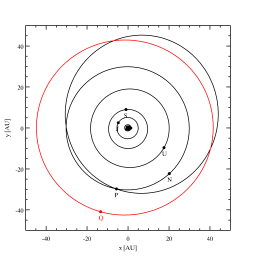SIDEREAL versus SYNODIC
A Sidereal Cycle measures a moving object in relation to a fixed background, and begins when the object crosses a particular point. The word sidereal derives from the Latin word for star, reflecting our perception of the star-filled heavens as fixed. Our diurnal cycle and yearly cycle are prime examples of sidereal cycles.
Our yearly cycle is defined by the four seasons, which shift at the equinoxes and the solstices. While actually measuring one revolution of the Earth around the Sun, our geocentric perspective of the year is defined by the passing of the Sun through the twelve fixed sections of the ecliptic that we call the zodiacal signs. The zodiacal year begins when the Sun crosses the first degree of Aries, while the Sun entering each of the cardinal signs denotes the solstices and equinoxes, when the day/night ratio is the most extreme or most equally balanced, and thus marks the turning points of our seasons.

The Greek term synodic refers to astronomical conjunctions. The Synodic Cycle measures the continually changing relationship between two moving bodies. The stunning visuals of the lunation cycle clearly reveal the mutable relationship between the Sun and Moon, which Rudhyar perceived as the model for understanding all planetary aspects.
A Synodic Cycle begins at the conjunction and ends at the next conjunction. Thus, the New Moon, the moment of the Moon's conjunction with the Sun, begins the new cycle of activity, and the Full Moon, at their opposition, marks the half-way point.
This information was excerpted from an article in the Mountain Astrologer. The extensive article about cycles may be viewed in its entirety online at: http://www.beyondsunsigns.com/pages/861718/